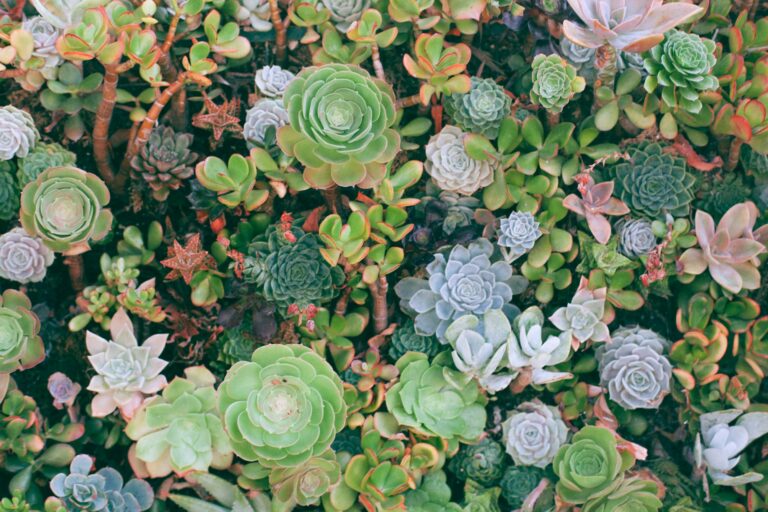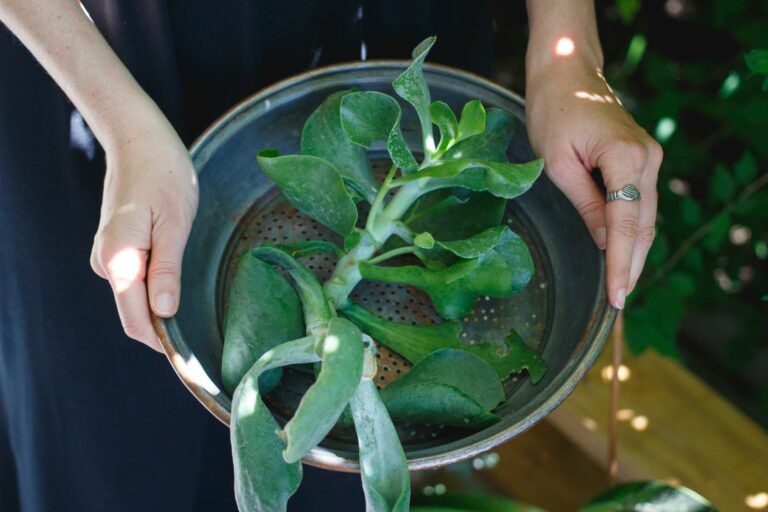Let’s talk about using salts on succulents. We do not mean regular table salt; Rather, we want to talk about Epsom salts and if you can use them on succulents.
Epsom salt is known for being a health and beauty product, but surprisingly, you can use Epsom salt on succulents to add nutrients. They provide key nutrients that a succulent may not get elsewhere during its growing period.
Why should you use Epsom salt on succulents?
We have talked about Epsom salts being a source of great nutrients. These nutrients are Magnesium and sulfate. These two nutrients are minor, but will improve your succulents’ growth.
Epsom salt is a naturally occurring mineral salt composed of Magnesium Sulfate. When compared to table salt (Sodium Chloride), Epsom salts are better for other uses than in food. They are bitter and used as medicine for pain or stress relief. If you try to eat the salt, it has a bitter taste.
These nutrients that are contained in the salt help the plant bloom, grow larger and become more lively. For most plants, magnesium helps them to absorb nutrients from the soil.
So, when a plant is low on magnesium, it can make it hard to absorb the nutrients it requires from the soil. Even photosynthesis can’t occur because of a lack of minerals.
Benefits of using Epsom salt on succulents
There are many uses for salts on your plant. We have found the main benefits of Epsom salt to your plant.
Repel Pests and insects.
Any salt, including table salt and Epsom salt, can repel insects away. But don’t use regular table salt on plants; stick to Epsom salts.
This salt works wonders when repelling pests such as beetles, snails, and slugs. It can kill slugs naturally. You can spray or sprinkle Epsom salt on or around succulents to kill or repel any pest that tries approaching your succulent.
To fertilize the succulents
Another benefit of Epsom salt is that it can act as a fertilizer for your succulents during the growing season. It can help your plant bloom faster.
Also, magnesium is important for the green color of your succulents. It can make your succulents look green and vibrant.
To prevent transplant shock
It’s frustrating when a plant undergoes transplant shock and dies. Even though you can’t avoid it sometimes, you can help your plant go through it and recover.
To help them, you need Epsom salt. Epsom salt will increase the magnesium content in the soil, which will help the plant absorb nutrients easily. Once your plant absorbs nutrients from the soil, it will be easy to recover from the shock.
So, the best way is to add Epsom salt to the soil before transplanting the plant.
To lower the soil pH
Succulents love acidic soil. So, to make the soil suitable for the plant, add Epsom soil to lower the pH to a favorable range. This will make the soil acidic, thus improving the plant’s growth.
How to add Epsom salt to the soil
When adding nutrients to the soil, you must know how to do it. Make sure it’s the correct amount because adding too much can kill your plant, and too little might not do the work it was intended for.
So here is how you add Epsom salt to the soil.
Take a tablespoon of Epsom salt and mix it in 4 liters of water. Mix the mixture until the salt is diluted. If you have a problem diluting the salt, mix it in warm water until it dissolves, then leave it until it’s cold.
Spray a portion of the water on the soil of the succulent. Spray it at least once a month to increase the magnesium content. The amount you spray can differ depending on the fertilizer you use on the soil.
If the fertilizer contains magnesium sulfur, there is no need to apply it, however, if it doesn’t have the minerals, you can add it to the soil.
Factors to consider before using Epsom salt on succulents
Before you decide to use Epsom salt for your succulents, there are things that you should know. They are important because they can help you keep your plant alive.
Here are the things to consider;
Test for soil acidity
If your soil is acidic, adding Epsom salt will make it more acidic. Increasing acidity is a problem for the plant. Always check the pH level of the soil before you add the salt.
Test for the soil’s magnesium levels
If your soil has enough magnesium, you don’t need to add Epsom salt to your succulents. It goes a long way to ensure that your plant has the correct amount of magnesium. You can add magnesium if the soil lacks it.
Use Epsom salt as a secondary fertilizer.
Some people choose to use Epsom salt as the primary fertilizer. That is a mistake you shouldn’t be making. Primary fertilizer should contain all the nutrients (nitrogen, potassium, phosphorous, magnesium, and sulfur) required for plant growth.
Adding only Epsom salt will make the plant lack the necessary nutrients. That can lead to other problems.
Problems that arise from using Epsom salt on your succulents
For everything that has a benefit, some problems arise. So, you have to remember that these are minerals, and if you don’t use them carefully, they can harm your succulents.
Here are some of the problems that arise from using Epsom salts.
Soil nutrient imbalance — magnesium and sulfur can displace other nutrients, such as calcium, causing an imbalance in the soil. It happens when you add extra magnesium, and its concentration is more than calcium. Calcium should be 10 times more than magnesium to avoid toxicity.
Salt injury — salts can burn leaves when you spray them. Also, the salt ions can burn the plant from the inside if they are in high concentrations.
Stunted growth — Accumulating salts in the soil can inhibit the plant from absorbing nutrients necessary for the growth of a succulent. As a result, the plant will stop growing due to nutrient deficiency.
Root colonization — excess magnesium in the soil can kill beneficial bacteria. These types of bacteria are beneficial because they colonize roots and fix nitrogen.
Conclusion
Now that you know you can use Epsom salt on succulents, ensure that you use it carefully and don’t kill your succulent. Every succulent has its growth requirements; analyze your plant and calculate whether it requires Epsom salt for its growth.






